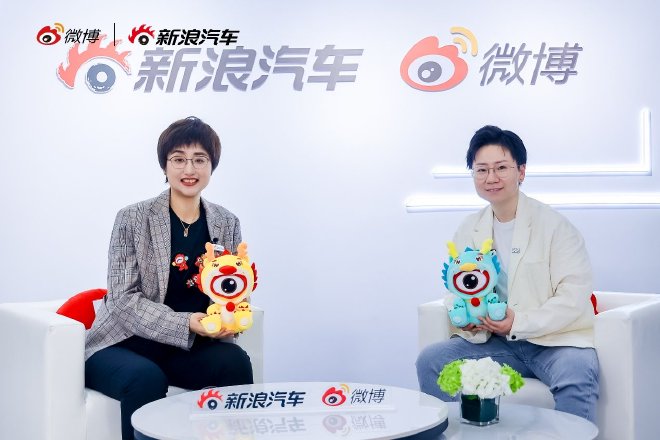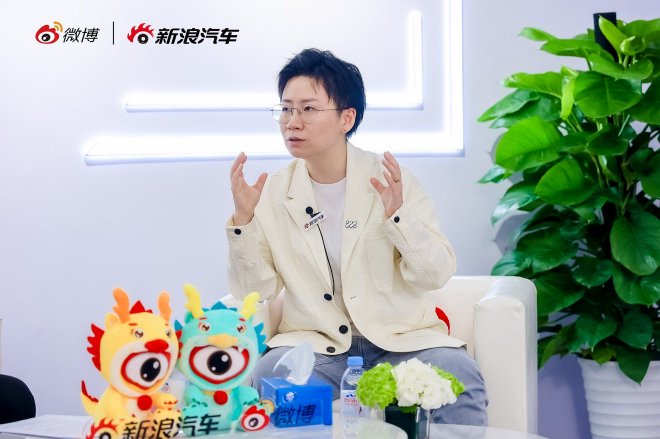On November 15, the 22nd Guangzhou International Auto Show officially opened. The auto market has entered a phase of stock competition. Chinese new energy vehicles, focusing on electrification and intelligence, drive high-quality development in the auto industry. This year’s auto show continues with the theme “New Technology, New Life.” It serves as a barometer for the development of the Chinese auto market. The event collaborates with the global auto industry to create a new era. The show features 78 global debuts, including 6 from multinational companies. A total of 1,171 vehicles will be displayed, with 512 being new energy vehicles. The event showcases new technology and innovations for the new era.
Li Weimeng, CMO of Zhiji Auto, shared insights on the development of smart electric vehicles. He divided this evolution into two phases. The first phase focuses on electrification. The second phase emphasizes overall intelligence. He noted that electrification has reached a high level. Now, the industry shifts towards intelligence. He referred to this new era as the “Internet Generation.” With the growth of the internet, consumers expect smart features in large purchases like cars. Chinese brands excel in intelligent driving. Zhiji has achieved a top-tier level, ranking among the industry’s elite. Here is the interview transcript: Chen Yao: Hello, Sina Auto readers. Today, we welcome Li Weimeng, CMO of Zhiji Auto. Please say hello. Li Weimeng: Hello everyone, I am Li Weimeng, CMO of Zhiji Auto. Chen Yao: Recently, Zhiji Auto launched the new LS6, which has performed well in the market. With only a month and a half left in the year, what achievements has the Zhiji brand made in 2024 regarding products, sales, and users? Li Weimeng: Let’s start with users. Zhiji Auto showcased two “super products” at the Guangzhou Auto Show. One is the L6, launched six months ago, and the other is the new LS6, launched less than two months ago. Both models quickly gained popularity. In October, the new LS6 accumulated over 30,000 orders, earning user recognition. We will analyze the reasons behind user choices and focus on feedback. This helps us quickly address weaknesses and enhance strengths. We aim for frequent technological iterations based on real user pain points, maintaining product competitiveness while gaining more user trust and affection. Currently, the main reason users choose Zhiji is the diverse digital chassis market. Buying a car is often the largest family expense. Our sales data shows that buyers typically test 4-6 models before deciding. Users who have tested Zhiji praise the chassis. The Lingxi digital chassis gives a 200,000-level electric vehicle a million-level driving experience. It offers both driving pleasure and comfort. For example, buying an electric car, especially for families, often involves concerns about motion sickness. During test drives, family members must sit in different positions to see if they experience motion sickness. Electric cars can induce motion sickness for three main reasons: first, they have good handling, allowing drivers to accelerate quickly; second, their quiet interiors and excellent NVH create a closed environment; third, larger sizes and poor seat placement can lead to strong feelings of motion sickness. Users have given positive feedback after test driving the new LS6 and L6. We integrated design elements to address this. Vehicles with strong performance and high centrifugal forces in sharp turns can cause motion sickness. Our products use cameras to predict these scenarios. They work with the chassis to lower the air suspension, reducing the vehicle’s center of gravity and counteracting centrifugal forces. This significantly reduces body roll, making the ride more comfortable and stable. Even during heavy traffic with frequent braking, the Lingxi digital chassis optimizes brake response. It minimizes head nodding, making stop-and-go less noticeable, which helps prevent motion sickness. After riding in our cars, users feel comfortable and consider them essential for their families. Lingxi also offers more options. Users can adjust the driving experience for sportiness or steering feel. Women often prefer lighter steering and better shock absorption, while men enjoy a more engaging driving experience. The Lingxi digital chassis accommodates these preferences. In summary, our cars appeal to the whole family, thanks to the Lingxi digital chassis. It features a four-wheel steering system that makes tight turns easier. Many users struggle to turn in narrow spaces with their own cars, often needing multiple turns. However, the new LS6 and L6 handle these situations effortlessly. After experiencing a spacious yet nimble vehicle, users find it hard to accept others. Thus, the Lingxi digital chassis is a key factor in users’ car-buying decisions. Chen Yao: You just mentioned the Lingxi digital chassis. We found that users on Weibo discuss many products with various details. If you could recommend just one feature of your product to potential customers, would you suggest the digital chassis? Li Weimeng: I would definitely recommend the Lingxi digital chassis. It allows users with different preferences to choose their driving style freely. Everyone will feel comfortable, no matter who sits inside. Our Lingxi digital chassis integrates well with the smart cabin and smart driving. It handles complex scenarios easily. For example, traditional vehicles can cause panic during sudden stops or emergency maneuvers, leading to chain accidents. The new LS6’s Lingxi digital chassis links with smart lights. It uses flashing signals to alert those nearby, including during parking. The lighting adjusts according to the parking environment. Front and rear lights connect with the surroundings through algorithms. They always provide optimal brightness for better visibility. This year, we say that the products from Zhiji resemble a smart living entity. Smart driving has fully upgraded to an “end-to-end intuitive driving model,” offering the instincts of a seasoned driver and addressing many pain points. The smart cabin enhances entertainment, safety, and personalization during driving. The entire vehicle feels like a “smart living entity.” Chen Yao: That’s great! It sounds like a smart entity that can handle all scenarios. However, we see the market becoming highly competitive. As a CMO, your perspective must be deep. Everyone is competing on sales, configurations, and prices. You notice a lot of product homogeneity. On one hand, there’s a desire for richer configurations, and on the other, a push for lower prices. This seems contradictory. What’s your take on this issue? Li Weimeng: We can look at it from two angles. First is the noticeable experience that users can perceive. Second is the baseline that users may not see, but car companies must uphold, like safety, which families prioritize when buying a car. Last year, a user bought a Zhiji LS6. While driving, he picked up his phone and caused a serious accident. The crash was severe, but he and his son suffered only minor injuries. The owner mentioned that his son was in the car. The accident shook him. After the incident, when the new Zhiji LS6 launched, he bought another one. He felt the need for safety. We have delivered nearly 100,000 units with zero battery self-ignition. Our safety standards exceed national standards. The Ministry of Industry and Information Technology mandates a battery lifespan of 8 years or 120,000 kilometers. Our Zhiji products maintain 96.8% battery health after 380,000 kilometers, equivalent to nearly 25 years of average daily driving. For passive safety, we developed our vehicles according to the G-Class standards by Zhongbao Research. The body features a submarine-like circular rib structure for 360-degree protection. Many designs enhance safety. Some cars use rigid front bumpers that can fail during a collision, allowing intrusion into the cabin. This increases fatality rates when hitting pedestrians or non-motor vehicles. We designed our front bumper with a soft structure. It absorbs impact forces, ensuring passenger safety and reducing fatality rates in pedestrian collisions. A car accident affects two families. Our engineers invested significant effort into these intricate designs. Customers may not see them, but safety issues can lead to serious consequences. As we discussed, whether it’s pricing competition or feature competition, safety always comes first. Zhiji, backed by SAIC Group, boasts the best supply chain integration in the country. This capability reduces costs, and we also implement many internal technical cost-saving measures. Intelligent driving includes parking scenarios. It features one-click valet parking. The car can park itself across floors. Zhiji uses one chip instead of two for advanced intelligent driving. This reduces costs but requires absolute reliability and safety. This is a red line that cannot be crossed. We ensure the product has no shortcomings in visible configurations. Users refer to it as a “hexagonal warrior.” Chen Yao: We will never dismiss safety redundancies, right? Li Weimeng: Correct. Chen Yao: Intelligent driving and smart cabins significantly enhance user convenience. Currently, the technology for intelligent driving and cabins is becoming more accessible, possibly reaching around 150,000. Do you think intelligent technology will create the largest differentiation in brand or technological competition? Li Weimeng: I believe the development of intelligent electric vehicles divides into two halves. The first half focuses on electrification, which has reached a high level. The second half emphasizes overall intelligence. The “internet generation” has grown with the internet. As a major consumer product, cars must become intelligent. Chinese brands excel in intelligent driving. Zhiji has reached the first tier, becoming one of four brands to successfully implement “nationwide no-map NOA.” We also discussed the digital chassis. The group considered chassis intelligence when proposing the new four modernizations in 2014. While the industry has standard calibrations, it must also address different user preferences and experiences. Like I mentioned earlier, sharp curves require the suspension to actively lower the body and reduce the center of gravity to counteract centrifugal force. This needs a centralized control system. This system must manage six dimensions of vehicle movement: up and down, left and right, front and back. The development process is complex. Safety is paramount. We must address issues like system latency and decision-making errors. Regardless, digital and intelligent chassis development is essential. The Lingxi digital chassis represents a decade of research by SAIC Group. It provides a premium driving experience in the new LS6 and L6. These features seem ordinary, but they involve extensive R&D and collaboration. Once activated, they will set a standard for other automakers. For example, intelligent four-wheel steering becomes hard to accept without once experienced. Intelligent features should enhance the driving experience, not just focus on in-cabin entertainment. After all, people can enjoy entertainment at home. Chen Yao: We see that the products from Zhiji are impressive, both in hardware and software. However, some say “traffic is king.” How do you view this situation? Li Weimeng: In this new marketing environment, we need to adjust our mindset. We used to focus solely on product quality, but now we must engage with traffic and create buzz. We need to leverage the internet to influence users and showcase our product’s uniqueness, especially on Weibo, due to its wide reach and speed. Chen Yao: One last question. Executives are getting involved in social media, but some say this distracts them. Do you think executive accounts can empower the brand and product? Li Weimeng: It depends on the individual. My Weibo and other accounts are personally managed. I just provide guidance to the team. Their persona requires careful consideration. Why must you manage your own account? Each person has a unique voice and style. This reflects their personal brand. You cannot have one style for one platform and another for another. I also consider which content suits which channel best. Chen Yao: You have verified it. Post more diligently. Due to time constraints, we will end the interview here. Li Weimeng: Okay. Chen Yao: Thank you, Weimeng, for your wonderful insights. We hope to invite you again to discuss Zhiji’s new products and strategies. Thank you, everyone.

